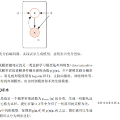In drug discovery, molecule optimization is an important step in order to modify drug candidates into better ones in terms of desired drug properties. With the recent advance of Artificial Intelligence, this traditionally in vitro process has been increasingly facilitated by in silico approaches. We present an innovative in silico approach to computationally optimizing molecules and formulate the problem as to generate optimized molecular graphs via deep generative models. Our generative models follow the key idea of fragment-based drug design, and optimize molecules by modifying their small fragments. Our models learn how to identify the to-be-optimized fragments and how to modify such fragments by learning from the difference of molecules that have good and bad properties. In optimizing a new molecule, our models apply the learned signals to decode optimized fragments at the predicted location of the fragments. We also construct multiple such models into a pipeline such that each of the models in the pipeline is able to optimize one fragment, and thus the entire pipeline is able to modify multiple fragments of molecule if needed. We compare our models with other state-of-the-art methods on benchmark datasets and demonstrate that our methods significantly outperform others with more than 80% property improvement under moderate molecular similarity constraints, and more than 10% property improvement under high molecular similarity constraints.
翻译:在药物发现方面,分子优化是一个重要的步骤,以便从预期药物特性方面将药物候选者改造成更好的药物特性。随着人工智能的最近进步,这种传统的体外过程日益通过硅方法得到促进。我们展示了一种在硅基方法上创新的方法,以计算优化分子,并形成一种通过深层基因化模型生成优化分子图的问题。我们的基因化模型遵循了以碎片为基础的药物设计的关键理念,并通过修改其小碎片优化分子来优化分子。我们的模型学会了如何通过学习具有良好和坏特性的分子的差别来识别可优化的碎片和如何改变这些碎片。在优化新分子的过程中,我们的模型运用了学习的智能信号,在碎片的预测位置解码优化分子分子的优化。我们还将多种模型建入一条管道,这样,使管道中的每个模型都能优化一个碎片,从而通过修改其小碎片来优化分子。如果需要的话,整个管道能够修改多种分子碎片。我们将我们的模型与其他在基准数据设置下的状态方法进行比较,通过从具有良好和坏性特性的不同方法来改变这些碎片。在80 %的分子特性限制下比其他相似的方法。




